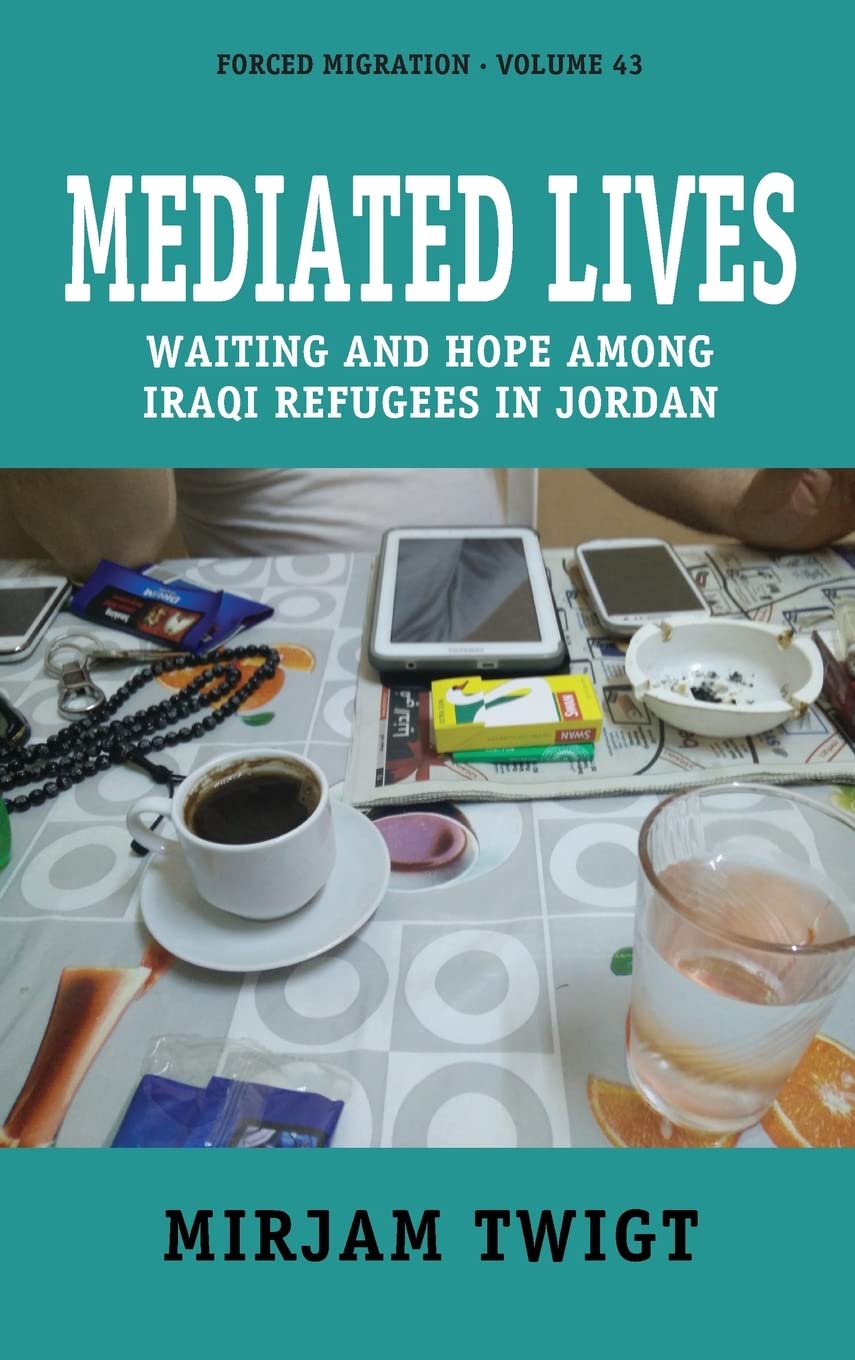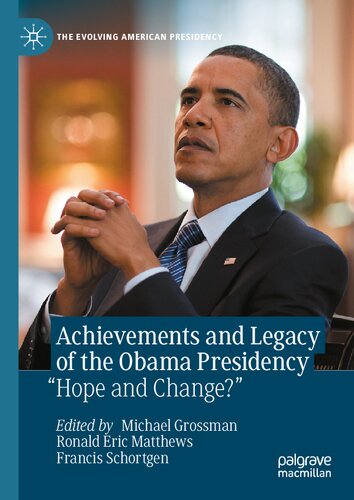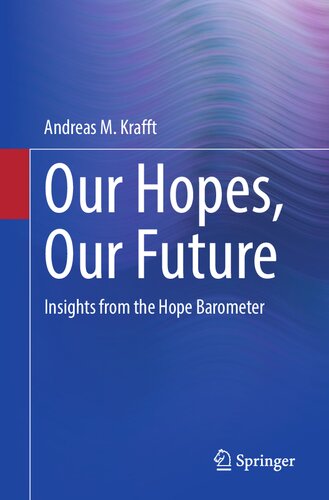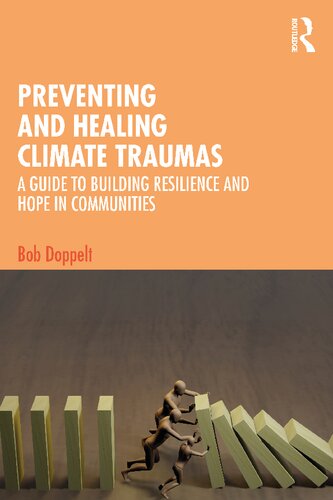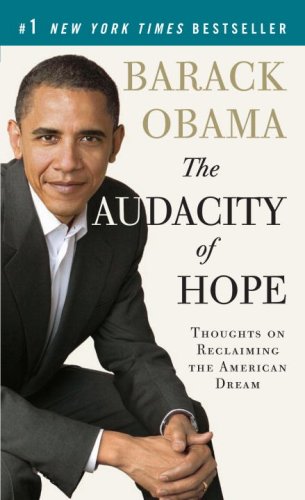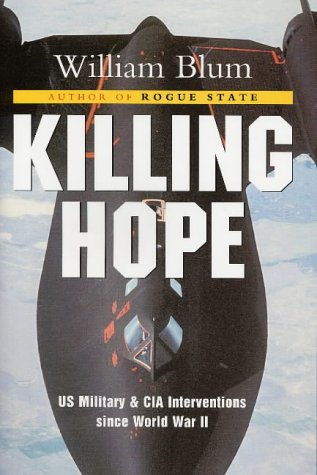موضوعات
آموزش و پرورش
ادبیات و زبان
پزشکی، دندانپزشکی و داروسازی
تاریخ و جغرافیا
داستان و رمان
دیگر
دین و فلسفه
روانشناسی
ریاضیات و آمار
سلامتی، تناسب اندام و رژیم غذایی
شیمی و پلیمر
علوم اجتماعی و حقوق
علوم زیستی و بیوتکنولوژی
فیزیک و نجوم
کامپیوتر و اینترنت
کتابهای کودکان و داستان
کسب و کار و اقتصاد
کشاورزی و دامپزشکی و غذا
معماری
مهندسی و فناوری
هنر و تئاتر
محصولات
Mediated Lives: Waiting and Hope among Iraqi Refugees in Jordan - Original PDF
نویسندگان: خلاصه: Using the example of Iraqi refugees in Jordan's capital of Amman, this book describes how information and communication technologies (ICTs) play out in the everyday experiences of urban refugees, geographically located in the Global South, and shows how interactions between online and offline spaces are key for making sense of the humanitarian regime, for carving out a sense of home and for sustaining hope. This book paints a humanizing account of making do amid legal marginalization, prolonged insecurity, and the proliferation of digital technologies.Achievements and Legacy of the Obama Presidency: “Hope and Change?” - Original PDF
نویسندگان: خلاصه: Campaigning on the simple mantra of HOPE, Obama’s mindset was that his legacy would not be one of race or ethnicity but one of positive change and unity across the political divide. He arrived in Washington, D.C. riding a wave of optimism as the American polity had grown tired and weary of the partisan politics and was looking for a “savior of sorts” who would restore their belief in the American dream and in equality and justice for all. But as Chuck Todd (2014: 471) notes, “hope is one thing, change another.” Obama would spend the next eight years fighting the partisanship and political dysfunction that he was elected to trans- form, including at times a debilitated Democratic controlled Congress and Republicans who sat out to stop every attempt of the president to bring about change. Despite all this apparent chaos, confusion and partisanship, Obama went to work to fulfill many of his campaign promises. In so doing, he would work with anyone who wanted to change the status quo. Obama would advocate for revising the social safety net programs and appear to be siding with Republicans while angering Democrats. At other times, he would side with Democrats for healthcare reform, gun control and amnesty for illegal immigrants to the disgust of his Republican counter- parts. When necessary, he would work around Congress by signing 276 executive orders and issuing another 1186 presidential proclamations. He gave us the Affordable Care Act, the stimulus, the Dodd-Frank Wall Street Reform, an executive action for Dreamers, the repeal of “Don’t Ask, Don’t Tell,” a nuclear deal with Iran, diplomatic relations with Cuba, a climate deal in Paris, a New START treaty, a reform of student-loan programs, and two liberal Supreme Court appointments (Frank 2019). As his second term came to a close, Obama would leave office with an impressive list of accomplishments but an approval rating 10 points lower than when he took office.1 When he left the Oval Office, the country had endured twenty-four straight years of polarizing presidents, all three of whom were elected, in part, to help end some of the acrimony (Todd 1 President Barack Obama would leave office with an approval rating of 57% according to a survey from the polling firm Gallup taken from January 9 to 15, 2017. Obama’s exiting approval rating is 23% points higher than those of former President George W. Bush but nine points lower than those of President Bill Clinton. 1 INTRODUCTION 3 2014: 490). But the divisiveness that had paralyzed so many presidents in their quest to fortify their legacy was waiting in the wings. Presidential legacies are often cemented by whom the electorate selects to take the place of the incumbent. Since the Civil War, only two presi- dents, Ulysses S. Grant and Ronald Reagan, have served two full terms, then given way to another member of their own party, winning a veri- table third term (Todd 2014: 481). Not so for President Obama. Despite having an “anointed successor” in Hillary Clinton and a seasoned Vice President in Joe Biden, Obama’s plan for a systematic overhaul of the bureaucracy and hope for an end to persistent inside-the-Beltway grid- lock would come to an abrupt halt. The plan to galvanize his legacy through the election of Hillary Clinton was stopped dead in its tracks when Republican maverick Donald J. Trump was elected the 45th Pres- ident of the United States in an election result that even the staunchest Republicans called shocking.Hatred, Emptiness, and Hope: Transference-Focused Psychotherapy in Personality Disorders - Original PDF
نویسندگان: خلاصه: Introduction The present volume continues my investigation of the psychopathology and treatment of severe personality disorders. It focuses on the analysis of particular clinical features of personality pathologies and describes contemporary psychoanalytic object relations theory as a general theoret- ical frame of treatment that allows us to conceptualize both normal per- sonality functioning and the very nature of personality disorders. This volume also includes my recent contributions to understanding the rela- tionship between neurobiological dispositions and their interaction with psychodynamic developments, again, both in normality and psychopa- thology. Finally, this volume explores the application of object relations theory to group processes, love relations, and therapists’ training. Part I of the book includes major theoretical statements. Chapter 1, “Object Relations Theory and Transference Analysis,” presents a brief, updated summary of contemporary object relations theory and its direct relevance to transference analysis, the fundamental therapeutic approach of transference-focused psychotherapy (TFP). This chapter summarizes the theoretical approach that informs the new psychotherapeutic devel- opments in the treatment of severe personality disorders that are de- scribed throughout the entire volume. Chapter 2, “Some Implications of New Developments in Neurobiology for Psychoanalytic Object Relations Theory” summarizes developments in neurobiology regarding the con- ceptualization of affect systems and their role as the motivational basis ix x HATRED, EMPTINESS, AND HOPE for establishing internalized dyadic self- and object-relations structures. This chapter shows how the underlying limbic and cortical brain struc- tures and functions contribute to embedding the fundamental concepts of self and of significant others. It proposes that the formation of such dy- adic structures is an essential task of higher levels of psychic functioning. Part II, on technique, updates empirical studies of the Personality Disorders Institute at Weill Cornell Medical College, expanding the ap- plications of TFP, exploring its relationship to standard psychoanalytic technique, and outlining a general comprehensive theory of technique that applies to both psychoanalysis and its derived psychotherapies. Chapter 3, “Extensions of Psychoanalytic Technique: The Mutual Influ- ences of Standard Psychoanalysis and Transference-Focused Psycho- therapy” presents an updated view of TFP in comparison with standard psychoanalytic technique that differentiates more sharply these two technical approaches and discusses the problems in training therapists efficiently in both modalities. Chapter 4, “Therapeutic Implications of Transference Structures in Various Personality Pathologies,” presents an overview of transference developments in different modalities of severe personality disorders and the modifications in technical approaches to transference analysis related to these structural differences. It is a highly specialized description of TFP in action. Chapter 5, “Affective Domi- nance, Dyadic Relationship, and Mentalization,” focuses on two basic premises from which the therapist enters every therapeutic session—that is, the alertness to affective dominance and the diagnosis of the predom- inant dyadic object relationship linked to it. By illustrating this approach with clinical cases, the chapter also points to similarities and differences between TFP and mentalization-based therapy (MBT), an alternative psychodynamic approach to severe personality disorders. Chapter 6, “Reflections on Supervision,” describes my personal experience as well as general controversial issues regarding the supervision of psychoan- alytic and derivative treatments. In the process, the chapter details our collective experience of training and supervising clinicians in TFP over many years at the Personality Disorders Institute. Part III, on specific psychopathologies, deals with particular disor- ders within the broad field of severe personality disorders. Chapter 7, “Psychodynamics and Treatment of Schizoid Personality Disorders,” presents our experience with these complex disorders. Schizoid struc- ture has received less attention in recent times than other types of severe personality disorders, particularly borderline and narcissistic personal- ity disorders. This chapter presents a diagnostic update and summa- rizes the specific contributions of the TFP approach to the treatment of schizoid personality. Chapter 8, “Psychotic Personality Structure,” ex- plores the differences between borderline personality organization and psychotic personality organization. It describes the development of psy- chotic features as a potential transitory regression in patients with bor- xiIntroduction derline personality organization, as well as a reflection of a psychotic structure that only emerges during treatment. It proposes correspond- ing differences in technique for transitory psychotic developments aris- ing in sessions, for transference psychosis, and for the emergence of major psychotic illness during the course of TFP. The chapter also ana- lyzes the nature and shifts in reality testing in the context of transference analysis. Chapter 9, “Narcissistic Pathology of Love Relations,” deals with the specific pathology of narcissistic personalities, the great diffi- culties of these patients in establishing and maintaining a love relation in depth, and the general study of sexuality and the capacity to love as part of the diagnostic evaluation of all patients with severe personality disorders. It also considers the influences of the therapist’s own emo- tional maturity in the assessment of this aspect of psychopathology. Part IV deals with the application of object relations theory to inpa- tient hospital treatment, to group regression and political leadership, and to psychoanalytic education. Chapter 10, “Psychoanalytic Ap- proaches to Inpatient Treatment of Personality Disorders: A Neglected Dimension,” examines the inpatient treatment of patients with person- ality disorders, a neglected therapeutic approach in the United States. Although pioneered predominantly in the United States, inpatient treat- ment has been developed in new ways in recent European experiences, with relatively extended hospital treatment of severe personality disor- ders. This chapter summarizes both the North American and recent Eu- ropean experiences with an important therapeutic instrument that, mostly for financial reasons, has been underutilized in the United States. It offers important technical tools that are relevant for the repetitive brief hospitalizations of regressed borderline patients that have replaced se- lective long-term inpatient treatment. This approach may be the basis for the development of optimal treatment of very regressed stages of illness in the future. Chapter 11, “Malignant Narcissism and Large Group Re- gression,” applies psychoanalytic object relations theory and the devel- oping knowledge of the social functioning of some personality disorders to the study of the mutual influences of severe leadership pathology in organizational and political structures and the psychological conditions that underpin large group regression. Political circumstances that foster such large group regression in social subgroups and leadership with ma- lignant narcissistic features tend to reinforce each other, with potentially damaging and dangerous consequences to the social community. This chapter is a contribution to the clarification of these potentially threaten- ing and damaging social developments. Chapter 12, “Challenges for the Future of Psychoanalysis,” applies the psychoanalytical approach that underlies this volume to the analysis of particular conditions of psycho- analysis today as a profession, an educational enterprise, and a social or- ganization within the mental health sciences. This chapter and the book end with recommendations for innovations that may strengthen the role xii HATRED, EMPTINESS,AND HOPE of psychoanalysis as a profession, a treatment approach, and a social or- ganization. It proposes solutions to organizational problems, particu- larly stressing the urgent need for development of empirical research, psychoanalytic psychotherapies, and radical renovation in its educa- tional structure.Our Hopes, Our Future: Insights from the Hope Barometer - Original PDF
نویسندگان: خلاصه: The results of the Hope Barometer for the years 2019 and 2020 sketch a rather dark future full of crises and show the psychological consequences of such sce- narios. If we as individuals and as a society are to flourish, we need images of a hopeful world that will promote our commitment and cohesion. But what does it take to ignite the flame of hope for a livable future together without a naive optimism trivializing and playing down the current problems? Hope contains the belief in a better world but also the recognition of obstacles and the moti- vation to act. This book presents the phenomenon of hope in connection with individual psychological findings and socially relevant developments. After the psychological basics of future thinking, the general expectations and wishes for the future of around 10,000 people from fourteen countries are presented. The experiences of the Corona pandemic give hope because they show how people can deal successfully with crises. This results in the importance and character of individual and social hope.Preventing and Healing Climate Traumas: A Guide to Building Resilience and Hope in Communities - Original PDF
نویسندگان: خلاصه: Acknowledgments ix About the Author xi Introduction 1 Part I A Public Health Approach is Required to Build Population-Level Capacity for Mental Wellness and Transformational Resilience for the Long Climate Emergency 17 1 Climate Overshoot “101” 19 2 The Causes and Consequences of Individual, Community, and Societal Traumas 36 3 Elements of a Public Health Approach to Enhancing Mental Wellness and Transformational Resilience for the Long Climate Emergency 54 Part II Organizing and Operating Community-Based Initiatives that Build Universal Capacity for Mental Wellness and Transformational Resilience 73 4 Get Organized 77 5 Begin Building Community Capacity for Mental Wellness and Transformational Resilience 100 6 Establish RCC Goals, Objectives, Strategies, and Action Plans 116 Part III The Five Foundational Areas RCCs Must Emphasize to Enhance Universal Mental Wellness and Transformational Resilience for the Climate Emergency 127 7 Build Social Connections across Boundaries in the Community 129 8 Ensure a Just Transition by Creating Healthy, Safe, Just, and Equitable Climate-Resilient Local Physical/ Built, Economic, and Ecological Conditions 147 9 Cultivate Universal Literacy about Mental Wellness and Resilience 170 10 Foster Engagement in Specific Practices that Support Mental Wellness and Resilience 183 CONTENTS x Contents 11 Establish Ongoing Opportunities for Residents to Heal Their Distresses and Traumas 203 12 Continually Track Progress, Learn, Improve, and Plan for the Long Term 215 Conclusion: The Need for a Global Movement to Enhance Universal Capacity for Mental Wellness and Transformational Resilience for the Civilization-Altering Climate Emergency 228 Index 235When the Diagnosis Is Multiple Sclerosis: Help, Hope, and Insights from an Affected Physician - Original PDF
نویسندگان: خلاصه: THE NAME , “MULTIPLE SCLEROSIS ” I have a very hard time with the name of this illness—“multiple sclerosis.” It has such a horrific sound to it. Even after seven years, I rarely say the words multiple sclerosis aloud. I much prefer the more appealing sound of MS. In speaking to others with multiple sclerosis (MS), I have learned that I am not alone with this preference. At the time I was diagnosed, I was somewhat familiar with this illness, hav- ing intermittently cared for multiple sclerosis patients in the hospital. Most of the patients I had seen were diagnosed with MS in the 1970s or 1980s, a time when medication for relapse prevention was not yet available. Others, who were frequently in the hospital, had a variant of MS called “primary progressive multiple sclerosis,” which can lead to significant disability fairly quickly. As a physician, I thought their situations were so very sad, as many patients had developed poor functioning of their arms, legs, bladder, or speech. I rarely had the opportunity to see the MS patients who had very little disability, since they were seen in the outpatient setting. So when I finally had it con- firmed, that yes, these bizarre symptoms I had been having were in fact due to multiple sclerosis, I conjured up the worst possible images of what might happen to me. While many of you may not have had the opportunity to meet patients with more advanced stages of MS, I suspect that your reaction to the diagnosis of MS may have been quite similar to mine. Many people still carry an image of multiple sclerosis as an illness that picks an individual out of the prime of his or her life, and leaves that person wheelchair bound and severely disabled. Fortunately, for the majority of women and men who are newly diagnosed with relapsing–remitting MS in the new millennium, this is not an inevitable outcome. And yet, while we know that medications now exist to prevent relapses, this knowledge does not necessarily make the initial journey any 2 When the Diagnosis Is Multiple Sclerosis easier. We did not sign up for this club. We did not ask to play this game. The anger, the grief, and the uncertainty about the future can be overwhelming. Give yourself time. It will be possible to feel in control again.Hope for a Heated Planet: How Americans Are Fighting Global Warming and Building a Better Future - Original PDF
نویسندگان: خلاصه: am finishing this book in the final days of the George W. Bush adminis- tration. For those of us who love the environment and long for peace, it has been a dark time. Through it, I have often thought of the words of the poet Theodore Roethke that I first heard from scholar and activist Robert Jay Lifton: “In a dark time, the eye begins to see.” The first light of dawn is now visible as the Democratic candidate, Senator Barack Obama, pushed by a growing grassroots movement, embraces action on climate change. To a lesser degree, though far more than President Bush, so does the Republican contender, Senator John McCain. That was far from the case when I began this project at the height of the president’s wartime popularity. This has turned out to be a book as much about hope and democracy as it is about global warming. Its central theme is that you and I can change history. What we believe, what actions we take, actually matter. It is an idea central to democracy. And it should give us hope. I disagree, strongly, with those who believe the American public has turned into a hopeless gaggle of consumers and couch potatoes who are content to let others rule their lives—or destroy the planet. At the height of President Bush’s popularity and influence it may have appeared that way. But national security and environmental degradation (especially global climate change) are complex, difficult, and abstract sub- jects. It has taken some time for us Americans to grasp the gravity of our situation, from melting ice caps to Iraq. This is especially true when our media mostly cover the White House and the Pentagon—regardless of the occupants—and report each utterance as gospel. Meanwhile, most of us are busy with jobs, families, and problems near home that we can actually see and do something about. The result has been that global warming—caused by the vast outpour- x P REFACE ings of carbon dioxide (CO2) and other pollutants from our cars, buildings, and factories—has increased and is picking up speed. But at the same time, so has a growing and revived environmental movement. It is joined now with new allies from the religious community, business, labor, medical and public health professionals, educators, and more. This new climate move- ment has deep roots in the big environmental groups, too often ignored or derided, that have been working to warn us and prevent global climate change since the elder George Bush’s administration in the 1980s. Their work is now bearing fruit. The public is becoming aroused and engaged. And, as a result, we will have a new, much more climate-friendly president and Congress in 2009. This book tells that story and also ex- plains the basics of climate change and its effects on human health and well-being—not just on polar bears and penguins. But Hope for a Heated Planet is finally about solutions to our dilemma. I’ve tried to give you the best steps you can take, both personal and political, to make a difference and to get involved. Like most authors, I like to imagine, of course, that our new president will take to heart every word I have poured out here. But even more impor- tant is that you do. My mother, Margaret Kirkland Musil, died after ninety- one wonderful years as I was writing. She taught me to love life, to love nature, to learn, to have faith, and to act on my beliefs. My first grandchild, Catherine Kirkland Unruh, was born shortly after. She will need the same lessons. So will all our children and grandchildren. Global climate change, we now know, can be prevented by building a vi- brant, healthy economy that does away with the belching furnaces, smoke- stacks, and combustion engines from the outmoded technologies of the nineteenth and twentieth centuries. But in a democracy, that will depend not on our new president, or the one after that. It is up to us. And the signs now are that many, many citizens and their organizations in this great na- tion are indeed aroused. But to prevail, we will need even more. That is really why I have written. I want you and your family and friends to join with me and millions of other Americans in making history. Nobody else can, or should, do it for youThe Audacity of Hope. Thoughts on Reclaiming the American Dream - Original PDF
نویسندگان: خلاصه: Republicans and Democrats ON MOST DAYS, I enter the Capitol through the basement. A small subway train carries me from the Hart Building, where my office is located, through an underground tunnel lined with the flags and seals of the fifty states. The train creaks to a halt and I make my way, past bustling staffers, maintenance crews, and the occasional tour group, to the bank of old elevators that takes me to the second floor. Stepping off, I weave around the swarm of press that normally gathers there, say hello to the Capitol Police, and enter, through a stately set of double doors, onto the floor of the U.S. Senate. The Senate chamber is not the most beautiful space in the Capitol, but it is imposing nonetheless. The dun-colored walls are set off by panels of blue damask and columns of finely veined marble. Overhead, the ceiling forms a creamy white oval, with an American eagle etched in its center. Above the visitors’ gallery, the busts of the nation’s first twenty vice presidents sit in solemn repose. And in gentle steps, one hundred mahogany desks rise from the well of the Senate in four horseshoe-shaped rows. Some of these desks date back to 1819, and atop each desk is a tidy receptacle for inkwells and quills. Open the drawer of any desk, and you will find within the names of the senators who once used it—Taft and Long, Stennis and Kennedy—scratched or penned in the senator’s own hand. Sometimes, standing there in the chamber, I can imagine Paul Douglas or Hubert Humphrey at one of these desks, urging yet again the adoption of civil rights legislation; or Joe McCarthy, a few desks over, thumbing through lists, preparing to name names; or LBJ prowling the aisles, grabbing lapels and gathering votes. Sometimes I will wander over to the desk where Daniel Webster once sat and imagine him rising before the packed gallery and his colleagues, his eyes blazing as he thunderously defends the Union against the forces of secession. But these moments fade quickly. Except for the few minutes that it takes to vote, my colleagues and I don’t spend much time on the Senate floor. Most of the decisions— about what bills to call and when to call them, about how amendments will be handled and how uncooperative senators will be made to cooperate—have been worked out well in advance by the majority leader, the relevant committee chairman, their staffs, and (depending on the degree of controversy involved and the magnanimity of the Republican handling the bill) their Democratic counterparts. By the time we reach the floor and the clerk starts calling the roll, each of the senators will have determined—in consultation with his or her staff, caucus leader, preferred lobbyists, interest groups, constituent mail, and ideological leanings—just how to position himself on the issue. It makes for an efficient process, which is much appreciated by the members, who are juggling twelve- or thirteen-hour schedules and want to get back to their offices to meet constituents or return phone calls, to a nearby hotel to cultivate donors, or to the television studio for a live interview. If you stick around, though, you may see one lone senator standing at his desk after the others have left, seeking recognition to deliver a statement on the floor. It may be an explanation of a bill he’s introducing, or it may be a broader commentary on some unmet national challenge. The speaker’s voice may flareRip by XmosRips with passion; his arguments—about cuts to programs for the poor, or obstructionism on judicial appointments, or the need for energy independence—may be soundly constructed. But the speaker will be addressing a near-empty chamber: just the presiding officer, a few staffers, the Senate reporter, and C-SPAN’s unblinking eye. The speaker will finish. A blue-uniformed page will silently gather the statement for the official record. Another senator may enter as the first one departs, and she will stand at her desk, seek recognition, and deliver her statement, repeating the ritual. In the world’s greatest deliberative body, no one is listeningAdaptive Optics for Vision Science Principles Practices Design and Applications - Original PDF
نویسندگان: خلاصه: The high transverse resolution of retinal imaging systems equipped with adaptive optics provides a unique opportunity to record these eye move- ments with very high accuracy. Putnam et al. showed that it is possible to record the retinal location of a fixation target on discrete trials with an error at least 5 times smaller than the diameter of the smallest foveal cones [63]. We used this capability to measure the standard deviation of fixation positions FIGURE 1.7 Images of the cone mosaics of 10 subjects with normal color vision, obtained with the combined methods of adaptive optics imaging and retinal densi- tometry. The images are false colored so that blue, green, and red are used to repre- sent the S, M, and L cones, respectively. (The true colors of these cones are yellow, purple, and bluish-purple). The mosaics illustrate the enormous variability in L/M cone ratio. The L/M cone ratios are (A) 0.37, (B) 1.11, (C) 1.14, (D) 1.24, (E) 1.77, (F) 1.88, (G) 2.32, (H) 2.36, (I) 2.46, (J) 3.67, (K) 3.90, and (L) 16.54. The proportion of S cones is relatively constant across eyes, ranging from 3.9 to 6.6% of the total population. Images were taken either 1° or 1.25° from the foveal center. For two of the 10 subjects, two different retinal locations are shown. Panels (D) and (E) show images from nasal and temporal retinas, respectively, for one subject; (J) and (K) show images from nasal and temporal retinas for another subject. Images (C), (J), and (K) are from Roorda and Williams [52]. All other images were made by Heidi Hofer. (See insert for a color representation of this figure.) (From Williams and Hofer [57]. Reprinted with permission from The MIT Press.) across discrete fixation trials, obtaining values that ranged from 2.1 to 6.3 arcmin, with an average of 3.4 arcmin, in agreement with previous studies [63, 64]. Interestingly, the mean fixation location on the retina was displaced from the location of highest foveal cone density by an average of about 10 arcmin (as shown in Fig. 1.8), indicating that cone density alone does not drive the location on the retina selected for fixation. This method may have interesting future applications in studies that require the submicron registra- tion of stimuli with respect to the retina or delivering light to retinal features as small as single cells. Whereas the method developed by our group can only record eye position on discrete trials, Scott Stevenson and Austin Roorda have shown that it is possible to extract continuous eye movement records from video-rate images obtained with an adaptive optics scanning laser ophthalmoscope (AOSLO) [66]. Eye movements cause local warping of the image within single video frames as well as translation between frames. The warping and translation information in the images can be used to recover a record of the eye move- ments that is probably as accurate as any method yet devised. This is illus- trated in Figure 1.9, which compares the eye movement record from the AOSLO with that from a Dual Purkinje Eye Tracker. The noise in the AOSLO trace is on the order of a few arc seconds compared to about a minute of arc for the Dual Purkinje Eye Tracker. Note also the greatly reduced overshoot following a saccade in the AOSLO trace. These overshoots are thought to be partly artifacts caused by lens wobble following the saccade and do not reflect the true position of the retinal image. The AOSLO is not susceptible to this artifact because it tracks the retinal position directly rather than relying on reflections from the anterior optics.Killing Hope_ US Military and CIA Interventions Since World War II. Part 1-Zed Books Ltd (2003) - Original PDF
نویسندگان: خلاصه: Introduction A Brief History of the Cold War and Anti-communism Our fear that communism might someday take over most of the world blinds us to the fact that anti- communism already has. —Michael Parenti1 It was in the early days of the fighting in Vietnam that a Vietcong officer said to his American prisoner: "You were our heroes after the War. We read American books and saw American films, and a common phrase in those days was "to be as rich and as wise as an American". What happened?"2 An American might have been asked something similar by a Guatemalan, an Indonesian or a Cuban during the ten years previous, or by a Uruguayan, a Chilean or a Greek in the decade subsequent. The remarkable international goodwill and credibility enjoyed by the United States at the close of the Second World War was dissipated country-by-country, intervention-by-intervention. The opportunity to build the war- ravaged world anew, to lay the foundations for peace, prosperity and justice, collapsed under the awful weight of anti-communism. The weight had been accumulating for some time; indeed, since Day One of the Russian Revolution. By the summer of 1918 some 13,000 American troops could be found in the newly-born Union of Soviet Socialist Republics. Two years and thousands of casualties later, the American troops left, having failed in their mission to "strangle at its birth" the Bolshevik state, as Winston Churchill put it.3 The young Churchill was Great Britain's Minister for War and Air during this period. Increasingly, it was he who directed the invasion of the Soviet Union by the Allies (Great Britain, the US, France, Japan and several other nations) on the side of the counter-revolutionary "White Army". Years later, Churchill the historian was to record his views of this singular affair for posterity: Were they [the Allies] at war with Soviet Russia? Certainly not; but they shot Soviet Russians at sight. They stood as invaders on Russian soil. They armed the enemies of the Soviet Government. They blockaded its ports, and sunk its battleships. They earnestly desired and schemed its downfall. But war—shocking! Interference—shame! It was, they repeated, a matter of indifference to them how Russians settled their own internal affairs. They were impartial—Bang!4 What was there about this Bolshevik Revolution that so alarmed the most powerful nations in the world? What drove them to invade a land whose soldiers had recently fought alongside them for over three years and suffered more casualties than any other country on either side of the World War? The Bolsheviks had had the audacity to make a separate peace with Germany in order to take leave of a war they regarded as imperialist and not in any way their war, and to try and rebuild a terribly weary and devastated Russia. But the Bolsheviks had displayed the far greater audacity of overthrowing a capitalist- feudal system and proclaiming the first socialist state in the history of the world. This was uppityness writ incredibly large. This was the crime the Allies had to punish, the virus which had to be eradicated lest it spread to their own people. 6 The invasion did not achieve its immediate purpose, but its consequences were nonetheless profound and persist to the present day. Professor D.F. Fleming, the Vanderbilt University historian of the Cold War, has noted: For the American people the cosmic tragedy of the interventions in Russia does not exist, or it was an unimportant incident long forgotten. But for the Soviet peoples and their leaders the period was a time of endless killing, of looting and rapine, of plague and famine, of measureless suffering for scores of millions— an experience burned into the very soul of a nation, not to be forgotten for many generations, if ever. Also for many years the harsh Soviet regimentations could all be justified by fear that the capitalist powers would be back to finish the job. It is not strange that in his address in New York, September 17, 1959, Premier Khrushchev should remind us of the interventions, "the time you sent your troops to quell the revolution", as he put it.5 In what could be taken as a portent of superpower insensitivity, a 1920 Pentagon report on the intervention reads: "This expedition affords one of the finest examples in history of honorable, unselfish dealings ... under very difficult circumstances to be helpful to a people struggling to achieve a new liberty."6 History does not tell us what a Soviet Union, allowed to develop in a "normal" way of its own choosing, would look like today. We do know, however, the nature of a Soviet Union attacked in its cradle, raised alone in an extremely hostile world, and, when it managed to survive to adulthood, overrun by the Nazi war machine with the blessings of the Western powers. The resulting insecurities and fears have inevitably led to deformities of character not unlike that found in an individual raised in a similar life- threatening manner. We in the West are never allowed to forget the political shortcomings (real and bogus) of the Soviet Union; at the same time we are never reminded of the history which lies behind it. The anti-communist propaganda campaign began even earlier than the military intervention. Before the year 1918 was over, expressions in the vein of "Red Peril", "the Bolshevik assault on civilization", and "menace to world by Reds is seen" had become commonplace in the pages of the New York Times. During February and March 1919, a US Senate Judiciary Subcommittee held heatings before which many "Bolshevik horror stories" were presented. The character of some of the testimony can be gauged by the headline in the usually sedate Times of 12 February 1919: DESCRIBE HORRORS UNDER RED RULE. R.E. SIMONS AND W.W. WELSH TELL SENATORS OF BRUTALITIES OF BOLSHEV1KI— STRIP WOMEN IN STREETS—PEOPLE OF EVERY CLASS EXCEPT THE SCUM SUBJECTED TO VIOLENCE BY MOBSآیا کتاب مورد نظر هنوز بر روی سایت قرار نگرفته است؟ جای نگرانی نیست! کافی است بر روی گزینه سفارش کتاب کلیک کرده و درخواست خود را ثبت کنید. در کمتر از چند ساعت کتاب شما را آماده خواهیم کرد.
